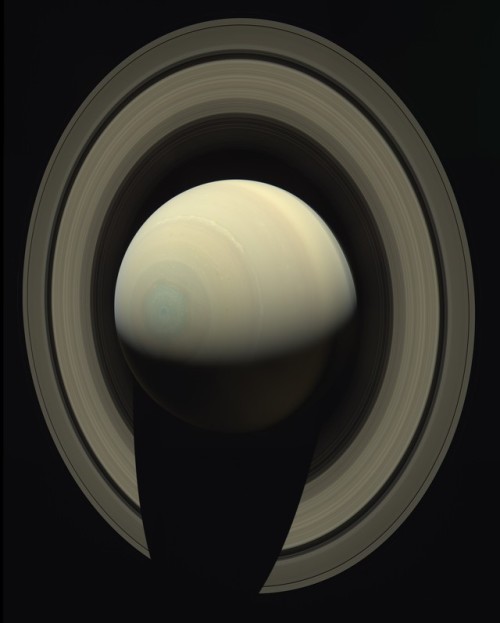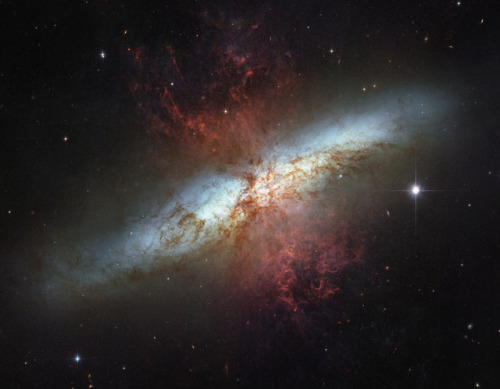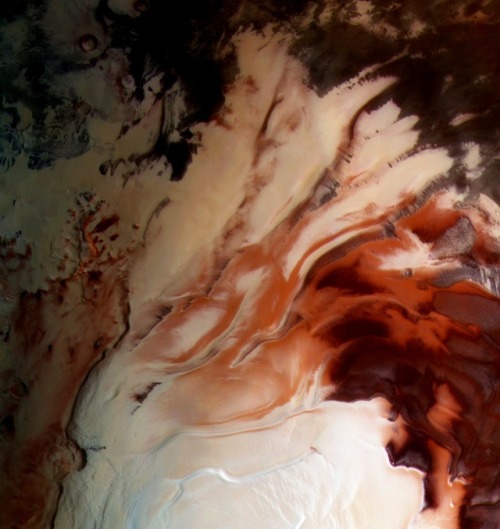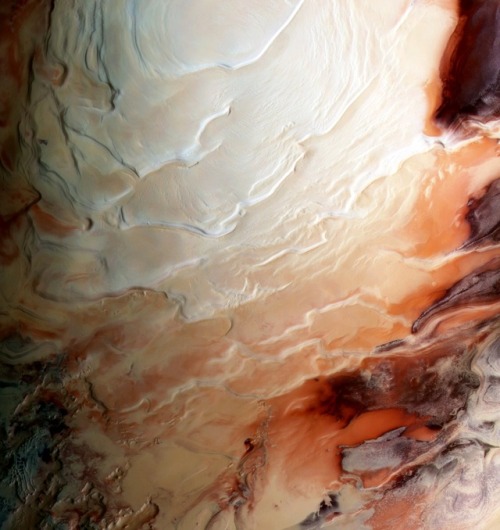December 13, 1965 – Truly Spectacular Images Of Our Planet Captured By The Astronauts Of Gemini 7 As










December 13, 1965 – Truly spectacular images of our planet captured by the astronauts of Gemini 7 as they zoomed around the Earth. In this era when we receive a daily dose of awesomeness from hi-res cameras on the ISS and various satellites, it’s easy to take beautiful Earth images for granted. I will never cease to be amazed by the stunning photography produced during the Project Gemini missions.
(NASA/Arizona State University)
More Posts from Xyhor-astronomy and Others

Massive Stars in Open Cluster Pismis 24
How massive can a normal star be? Estimates made from distance, brightness and standard solar models had given one star in the open cluster Pismis 24 over 200 times the mass of our Sun, making it a record holder. This star is the brightest object located just above the gas front in the above image. Close inspection of images taken recently with the Hubble Space Telescope, however, have shown that Pismis 24-1 derives its brilliant luminosity not from a single star but from three at least. Component stars would still remain near 100 solar masses, making them among the more massive stars currently on record. Toward the bottom of the image, stars are still forming in the associated emission nebula NGC 6357, including several that appear to be breaking out and illuminating a spectacular cocoon.
Credit: NASA, ESA and J. M. Apellániz (IAA, Spain)
Solar System: Things to Know This Week
Our Dawn mission to the asteroid belt is no ordinary deep space expedition.
Instead of traditional chemical rockets, the spacecraft uses sophisticated ion engines for propulsion. This enabled Dawn to become the first mission to orbit not one, but two different worlds — first the giant asteroid Vesta and now the dwarf planet Ceres. Vesta and Ceres formed early in the solar system’s history, and by studying them, the mission is helping scientists go back in time to the dawn of the planets. To mark a decade since Dawn was launched on Sept. 27, 2007, here are 10 things to know about this trailblazing mission.
1. Ion Engines: Not Just for Sci-Fi Anymore

Most rocket engines use chemical reactions for propulsion, which tend to be powerful but short-lived. Dawn’s futuristic, hyper-efficient ion propulsion system works by using electricity to accelerate ions (charged particles) from xenon fuel to a speed seven to 10 times that of chemical engines. Ion engines accelerate the spacecraft slowly, but they’re very thrifty with fuel, using just milligrams of xenon per second (about 10 ounces over 24 hours) at maximum thrust. Without its ion engines, Dawn could not have carried enough fuel to go into orbit around two different solar system bodies. Try your hand at an interactive ion engine simulation.
2. Time Capsules

Scientists have long wanted to study Vesta and Ceres up close. Vesta is a large, complex and intriguing asteroid. Ceres is the largest object in the entire asteroid belt, and was once considered a planet in its own right after it was discovered in 1801. Vesta and Ceres have significant differences, but both are thought to have formed very early in the history of the solar system, harboring clues about how planets are constructed. Learn more about Ceres and Vesta—including why we have pieces of Vesta here on Earth.
3. Portrait of a Dwarf Planet

This view of Ceres built from Dawn photos is centered on Occator Crater, home of the famous “bright spots.” The image resolution is about 460 feet (140 meters) per pixel.
Take a closer look.
4. What’s in a Name?
Craters on Ceres are named for agricultural deities from all over the world, and other features carry the names of agricultural festivals. Ceres itself was named after the Roman goddess of corn and harvests (that’s also where the word “cereal” comes from). The International Astronomical Union recently approved 25 new Ceres feature names tied to the theme of agricultural deities. Jumi, for example, is the Latvian god of fertility of the field. Study the full-size map.
5. Landslides or Ice Slides?

Thanks to Dawn, evidence is mounting that Ceres hides a significant amount of water ice. A recent study adds to this picture, showing how ice may have shaped the variety of landslides seen on Ceres today.
6. The Lonely Mountain

Ahuna Mons, a 3-mile-high (5-kilometer-high) mountain, puzzled Ceres explorers when they first found it. It rises all alone above the surrounding plains. Now scientists think it is likely a cryovolcano — one that erupts a liquid made of volatiles such as water, instead of rock. “This is the only known example of a cryovolcano that potentially formed from a salty mud mix, and that formed in the geologically recent past,” one researcher said. Learn more.
7. Shining a Light on the Bright Spots

The brightest area on Ceres, located in the mysterious Occator Crater, has the highest concentration of carbonate minerals ever seen outside Earth, according to studies from Dawn scientists. Occator is 57 miles (92 kilometers) wide, with a central pit about 6 miles (10 kilometers) wide. The dominant mineral of this bright area is sodium carbonate, a kind of salt found on Earth in hydrothermal environments. This material appears to have come from inside Ceres, and this upwelling suggests that temperatures inside Ceres are warmer than previously believed. Even more intriguingly, the results suggest that liquid water may have existed beneath the surface of Ceres in recent geological time. The salts could be remnants of an ocean, or localized bodies of water, that reached the surface and then froze millions of years ago. See more details.
8. Captain’s Log
Dawn’s chief engineer and mission director, Marc Rayman, provides regular dispatches about Dawn’s work in the asteroid belt. Catch the latest updates here.
9. Eyes on Dawn
Another cool way to retrace Dawn’s decade-long flight is to download NASA’s free Eyes on the Solar System app, which uses real data to let you go to any point in the solar system, or ride along with any spacecraft, at any point in time—all in 3-D.
10. No Stamp Required

Send a postcard from one of these three sets of images that tell the story of dwarf planet Ceres, protoplanet Vesta, and the Dawn mission overall.
Make sure to follow us on Tumblr for your regular dose of space: http://nasa.tumblr.com.
Secret Chamber? Cosmic Rays Reveal Possible Void Inside Great Pyramid

A large void has been discovered inside the Great Pyramid of Giza, thanks to cosmic rays. If the large space turns out to exist, its function — which could be anything from new chamber to sealed-off construction passage — is likely to be the source of much archaeological debate.
An international group of researchers reported today (Nov. 2) in the journal Nature that by tracking the movements of particles called muons, they have found an empty space more than 98 feet (30 meters) long that sits right above the granite-walled Grand Gallery within the massive pyramid. The Great Pyramid, also known as Khufu’s pyramid, was built during that pharaoh’s reign between 2509 B.C. and 2483 B.C. No new rooms or passages have been confirmed inside the pyramid since the 1800s.
“The void is there,” said Mehdi Tayoubi, the president of the organization Heritage Innovation Preservation and a leader of the ScanPyramids mission, an ongoing effort to bring new technology to bear on Egypt’s most famous structures. Read more.

Image of Saturn taken by the Cassini spacecraft in 2013
Image credit: NASA / JPL-Caltech


Solar ❤




North Cascades National Park, Washington
A night in the Cascade Mountains

Messier 82
Messier 82 is a starburst galaxy about 12 million light-years away in the constellation Ursa Major. A member of the M81 Group, it is about five times more luminous than the whole Milky Way and has a center one hundred times more luminous than our galaxy’s center.
Image credit: NASA/ESA & Hubble
Solar System: 10 Things to Know This Week
Even the most ambitious plans start with a drawing. Visualizing a distant destination or an ambitious dream is the first step to getting there. For decades, artists working on NASA projects have produced beautiful images that stimulated the imaginations of the people working to make them a reality.

Some of them offered visualizations of spacecraft that had not yet been built; others imagined what it might look like to stand on planets that had not yet been explored. This week, we look at 10 pieces of conceptual art for our missions before they were launched–along with actual photos taken when those missions arrived at their destinations.
1. Apollo at the Moon

In 1968, an artist with our contractor North American Rockwell illustrated a phase of the Apollo lunar missions, showing the Command and Service Modules over the surface of the Moon. In 1971, an astronaut aboard the Lunar Module during Apollo 15 captured a similar scene in person with a camera.
2. Ready for Landing

This artist’s concept depicts an Apollo Lunar Module firing its descent engine above the lunar surface. At right, a photo from Apollo 12 in 1969 showing the Lunar Module Intrepid, taken by Command Module Pilot Richard Gordon.
3. Man and Machine on the Moon

Carlos Lopez, an artist with Hughes Aircraft Company, created a preview of a Surveyor spacecraft landing for our Jet Propulsion Laboratory in the early 1960s. The robotic Surveyor missions soft landed on the Moon, collecting data and images of the surface in order to ensure a safe arrival for Apollo astronauts a few years later. In the image at right, Apollo 12 astronaut Alan Bean examines the Surveyor 3 spacecraft during his second excursion on the Moon in November 1969.
4. O Pioneer!

In missions that lived up to their names, we sent the Pioneer 10 and 11 spacecraft to perform the first up-close exploration of the outer solar system. At left, an artist’s imagining of Pioneer passing Jupiter. At right, Pioneer 11’s real view of the king of planets taken in 1974.
5. The Grand Tour

An even more ambitious pair of robotic deep space adventurers followed the Pioneers. Voyager 1 and 2 both visited Jupiter and Saturn. Voyager 2 went on to Uranus and Neptune. Even the most visionary artists couldn’t imagine the exotic and beautiful vistas that the Voyager spacecraft witnessed. These images were taken between 1979 and 1989.
6. Journey to a Giant

Our Cassini spacecraft carried a passenger to the Saturn system: the European Space Agency’s Huygens probe. Huygens was designed to land on Saturn’s planet-sized moon Titan. At left is an artist’s view of Cassini sending the Huygens probe on its way toward Titan, and at right are some actual images of the giant moon from Cassini’s cameras.
7. Titan Unveiled

On Jan. 14, 2005, the Huygens probe descended through Titan’s thick haze and revealed what Titan’s surface looks like for the first time in history. Before the landing, an artist imagined the landscape (left). During the descent, Huygens’ imagers captured the actual view at four different altitudes (center)—look for the channels formed by rivers of liquid hyrdocarbons. Finally, the probe came to rest on a pebble-strewn plain (right).
8. Hazy Skies over Pluto

David Seal rendered this imaginary view from the surface of Pluto, and in the sky above, an early version of the spacecraft that came to be known as our New Horizons. At the time, Pluto was already suspected of having a thin atmosphere. That turned out be true, as seen in this dramatic backlit view of Pluto’s hazy, mountainous horizon captured by one of New Horizons’ cameras in 2015.
9. Dreams on Mars, Wheels on Mars

Long before it landed in Gale Crater, our Curiosity rover was the subject of several artistic imaginings during the years the mission was in development. Now that Curiosity is actually rolling through the Martian desert, it occasionally stops to take a self-portrait with the camera at the end of its robotic arm, which it uses like a selfie stick.
10. The World, Ceres

No one knew exactly what the dwarf planet Ceres, the largest body in the asteroid belt, looked like until our Dawn mission got there. Dawn saw a heavily cratered world—with a few surprises, such as the famous bright spots in Occator crater.

There’s more to come. Today we have carefully created artist impressions of several unexplored destinations in the solar system, including the asteroids Psyche and Bennu, and an object one billion miles past Pluto that’s now called 2014 MU69.

You can help nickname this object (or objects—there may be two) by submitting your names by Dec. 1. Our New Horizons spacecraft will fly past MU69 on New Year’s Day 2019.
Soon, we’ll once again see how nature compares to our imaginations. It’s almost always stranger and more beautiful than we thought.
Make sure to follow us on Tumblr for your regular dose of space: http://nasa.tumblr.com.


Martian North Pole
ESA / G. Neukum (Freie Universitaet, Berlin) / Bill Dunford


Two moons of Uranus: Titania and Oberon. Both moons were discovered by William Herschel in 1787.
Credit: NASA/JPL
-
 studyinaesthetics liked this · 10 months ago
studyinaesthetics liked this · 10 months ago -
 hauntedstudentpatrol liked this · 3 years ago
hauntedstudentpatrol liked this · 3 years ago -
 scene-hair-tutorials reblogged this · 7 years ago
scene-hair-tutorials reblogged this · 7 years ago -
 kimbermcleod reblogged this · 7 years ago
kimbermcleod reblogged this · 7 years ago -
 waterhermit reblogged this · 7 years ago
waterhermit reblogged this · 7 years ago -
 kimbermcleod liked this · 7 years ago
kimbermcleod liked this · 7 years ago -
 kuthikorthafari reblogged this · 7 years ago
kuthikorthafari reblogged this · 7 years ago -
 souldecay reblogged this · 7 years ago
souldecay reblogged this · 7 years ago -
 lightning1999 liked this · 7 years ago
lightning1999 liked this · 7 years ago -
 xyhor-natural-science reblogged this · 7 years ago
xyhor-natural-science reblogged this · 7 years ago -
 photowizard17 liked this · 7 years ago
photowizard17 liked this · 7 years ago -
 saganart liked this · 7 years ago
saganart liked this · 7 years ago -
 tobimonkee reblogged this · 7 years ago
tobimonkee reblogged this · 7 years ago -
 splunger reblogged this · 7 years ago
splunger reblogged this · 7 years ago -
 hc1701 reblogged this · 7 years ago
hc1701 reblogged this · 7 years ago -
 hc1701 liked this · 7 years ago
hc1701 liked this · 7 years ago -
 unrulyhedge reblogged this · 7 years ago
unrulyhedge reblogged this · 7 years ago -
 give-me-back-my-legions liked this · 7 years ago
give-me-back-my-legions liked this · 7 years ago -
 discountyeezus reblogged this · 7 years ago
discountyeezus reblogged this · 7 years ago -
 discountyeezus liked this · 7 years ago
discountyeezus liked this · 7 years ago -
 llcnsnnts reblogged this · 7 years ago
llcnsnnts reblogged this · 7 years ago -
 spacejunk-03-blog liked this · 7 years ago
spacejunk-03-blog liked this · 7 years ago -
 voorpretty liked this · 7 years ago
voorpretty liked this · 7 years ago -
 thinkingbooutyou reblogged this · 7 years ago
thinkingbooutyou reblogged this · 7 years ago -
 sololamusicanellamiatesta liked this · 7 years ago
sololamusicanellamiatesta liked this · 7 years ago -
 due-lupi reblogged this · 7 years ago
due-lupi reblogged this · 7 years ago -
 due-lupi liked this · 7 years ago
due-lupi liked this · 7 years ago -
 sdgrave reblogged this · 7 years ago
sdgrave reblogged this · 7 years ago -
 darth-romantic liked this · 7 years ago
darth-romantic liked this · 7 years ago -
 bibliophiliosaurus reblogged this · 7 years ago
bibliophiliosaurus reblogged this · 7 years ago -
 wachawi-blog reblogged this · 7 years ago
wachawi-blog reblogged this · 7 years ago -
 remi-martin-blog reblogged this · 7 years ago
remi-martin-blog reblogged this · 7 years ago -
 xyhor-astronomy reblogged this · 7 years ago
xyhor-astronomy reblogged this · 7 years ago -
 husband-wife-onedog liked this · 7 years ago
husband-wife-onedog liked this · 7 years ago -
 llcnsnnts liked this · 7 years ago
llcnsnnts liked this · 7 years ago -
 therodentqueen reblogged this · 7 years ago
therodentqueen reblogged this · 7 years ago -
 therodentqueen liked this · 7 years ago
therodentqueen liked this · 7 years ago -
 terrorsam liked this · 7 years ago
terrorsam liked this · 7 years ago -
 fishstickmonkey reblogged this · 7 years ago
fishstickmonkey reblogged this · 7 years ago -
 likethearchangel reblogged this · 7 years ago
likethearchangel reblogged this · 7 years ago -
 1whoknowsnothing-blog reblogged this · 7 years ago
1whoknowsnothing-blog reblogged this · 7 years ago
For more content, Click Here and experience this XYHor in its entirety!Space...the Final Frontier. Let's boldly go where few have gone before with XYHor: Space: Astronomy & Spacefaring: the collection of the latest finds and science behind exploring our solar system, how we'll get there and what we need to be prepared for!
128 posts